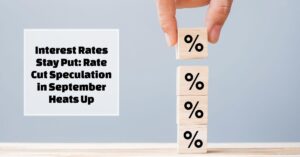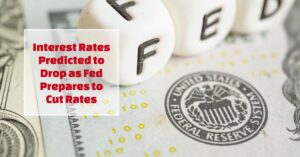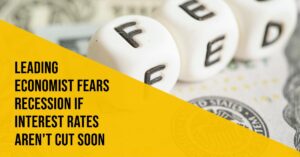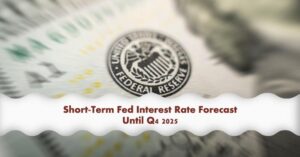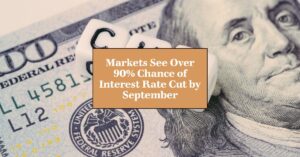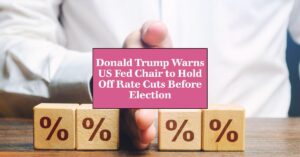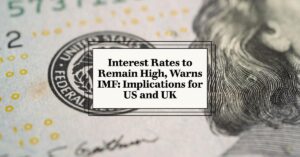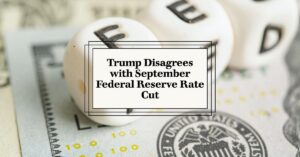In a highly anticipated decision, the Fed holds interest rates steady in its July meeting, signaling a cautious approach in a still-unsettled economic landscape. As discussions around inflation and economic growth continue to stir up financial markets, investors are fixated on when the Federal Reserve might finally move towards cutting interest rates. Understanding the implications of this pause offers insights into the future direction of monetary policy and its impact on individuals and businesses alike.
Fed Holds Interest Rates Steady: Here's When a Rate Cut Could Happen
Why Did The Fed Hold Rates Steady?
The Federal Reserve's decision to maintain interest rates during its July meeting reflects a complex interaction of economic factors. With inflation remaining persistently above the Fed's target of 2%, and signs of slower economic growth emerging, the decision was undoubtedly not easy. Jerome Powell, the Fed Chair, has emphasized the need for a wait-and-see approach, allowing time to evaluate how previous rate hikes have influenced economic activity.
The Fed's decision highlights an important balancing act. On one hand, there is pressure to control inflation without stifling economic growth; on the other, there are fears that keeping rates too high for too long could lead to a slowdown—something that many economists are closely monitoring. As noted by CBS News, many market analysts are now speculating about when a rate cut could indeed materialize, especially if inflation shows signs of decreasing significantly.
Current Economic Indicators
Inflation Rates and Consumer Behavior
In July, the inflation rate hovered around 4.1%, significantly above the Fed's target but showing signs of moderate decline. The central bank's goal remains to cool down prices while fostering sustainable economic growth. Consumer sentiment has also shown variability; recent surveys show mild concerns about economic stability but retain optimism regarding job growth.
Employment and Job Market Dynamics
The job market remains robust, with unemployment rates steady at approximately 4%. Yet, the Fed is eyeing wage growth, as sustained increases in wages might further fuel inflation. Labor markets are a double-edged sword; while strong employment figures signal economic health, they can complicate inflation management if wage growth rises too rapidly.
Global Economic Context
Beyond domestic factors, global economic conditions can influence the Fed’s decisions. For instance, uncertainties in international markets—particularly concerning trade and geopolitical tensions—could extend their cautious approach. Global inflation rates are also of concern, and fluctuations can have a trickle-down effect on the U.S. economy.
Signs That a Rate Cut Could Happen
As we look ahead, many investors and analysts are curious about when the next rate cut might occur. Although the Fed has maintained its current rates, certain indicators suggest that easing could be on the horizon.
Economic Slowdown and Its Impact
If signs of economic slowdown become evident—such as decreased GDP growth or a reduction in consumer spending—the Fed may find itself under pressure to act. Historically, the Fed has reacted to downturns by lowering rates to stimulate growth. Monitoring reports from the Bureau of Economic Analysis will be critical in understanding these trends as they develop.
Upcoming Fed Meetings
The Fed's next meeting is scheduled for September 17, 2024, and all eyes will be on any hints from policymakers about a potential rate cut. If inflation continues to decline and economic indicators suggest a slowdown, it could provide the necessary conditions for a rate cut announcement. CNN reports that markets are already trading as if a rate cut will be imminent, reflecting investor expectations.
Historical Context of Rate Cuts
To understand when a rate cut might happen, it's essential to reflect on the Fed's historical patterns. Major decisions regarding rate cuts often follow periods of sustained inflationary pressure followed by economic stagnation. In previous instances, such as during the 2008 financial crisis, the Fed reacted by slashing rates amid recession fears.
Implications of a Rate Cut for Average Americans
Should the Fed decide to cut rates, the implications for consumers would be significant:
Home and Business Loans
A reduction in interest rates typically leads to lower borrowing costs. For homebuyers, this means potentially lower mortgage rates, making home purchases more affordable. Small businesses might also benefit from reduced loan costs, enabling them to invest in growth and hiring.
Impact on Savings Accounts
Conversely, lower interest rates could mean diminished earnings on savings accounts and fixed-income investments. Savers may see lower returns, which could force them to reconsider their financial strategies.
Stock Market Response
Historically, stock markets have reacted positively to anticipated rate cuts, as lower rates can drive consumer spending and corporate investment. However, the volatility surrounding such decisions can lead to uncertainty in short-term investments. Market participants should remain vigilant, keeping an eye on the Fed's communications and economic forecasts.
What Should Investors Do?
As uncertainty looms over future Fed decisions, investors are advised to consider diversifying their portfolios to hedge against potential fluctuations in interest rates. Here are some strategies:
Consider Bonds and Dividend Stocks
Investing in bonds can provide a buffer against volatility, especially if rates are expected to fall. Similarly, dividend-paying stocks may attract some investors looking for consistent returns in a low-rate environment.
Stay Informed on Economic Indicators
Monitoring economic data related to inflation and employment will be crucial. Understanding these indicators will allow for timely adjustments in investment strategies as the economic climate changes.
Consult Financial Advisors
Professional advice can provide tailored strategies for individuals based on their risk tolerance and financial goals. Conversations with a financial advisor can help in navigating the complexities associated with low-interest-rate environments.
Final Thougths
The Fed's decision to hold interest rates steady in its July meeting underscores the careful path policymakers are navigating amid fluctuating economic indicators. While the question of “when a rate cut could happen” remains open, all eyes will be on the upcoming September meeting. Potential implications for consumers and investors could be profound, making it vital to remain informed and prepared.
In the rapidly changing economic landscape, staying updated on Federal Reserve policies and their broader economic implications will empower individuals and businesses to make informed decisions. Whether or not a cut is on the horizon, understanding the narrative surrounding these monetary policy changes is crucial for navigating the future financial environment.
ALSO READ:
- How Low Will Interest Rates Go in 2024?
- Interest Rate Predictions for the Next 3 Years: (2024-2026)
- Interest Rate Predictions for Next 2 Years: Expert Forecast
- Interest Rate Predictions for Next 10 Years: Long-Term Outlook
- When is the Next Fed Meeting on Interest Rates in 2024?
- Interest Rate Cuts: Citi vs. JP Morgan – Who is Right on Predictions?
- More Predictions Point Towards Higher for Longer Interest Rates
